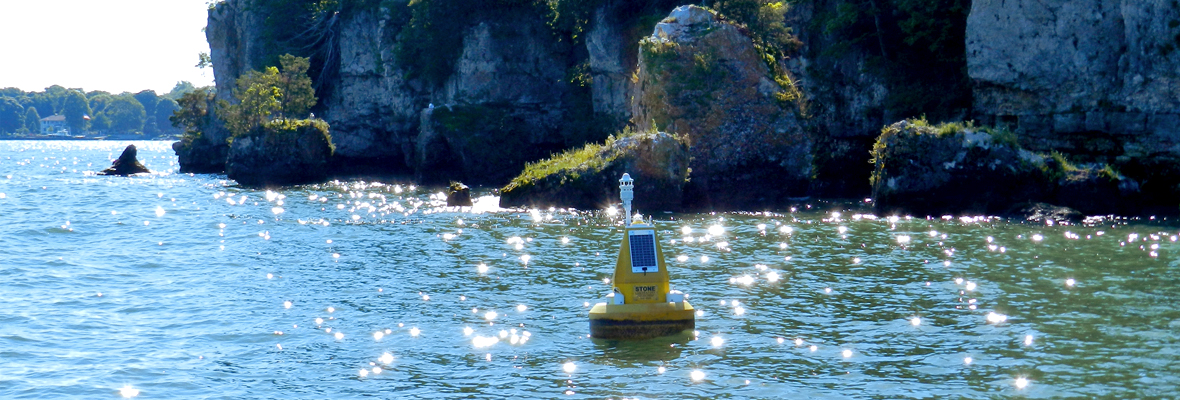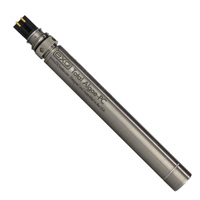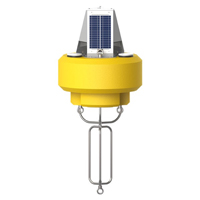Lake Erie is one of the nation’s most important natural treasures. Among the largest commercial freshwater fishery operations worldwide, the lake is an important economic focal point for the region. Dotted with islands and lined by beaches, the lake is also a source of recreation and culture.
Lake Erie plays such an iconic role in American culture, and it is critical to the local ecosystem. For these reasons, Lake Erie buoys have a host of unique challenges to meet as they help researchers and managers acquire the data they need. Here are some interesting ways that Lake Erie buoys are deployed to monitor this important body of water.
Studying Water Environments in the Lake Erie Basin
Scientists from Bowling Green State University (BGSU), Michigan State University (MSU), and the National Oceanography and Atmospheric Administration (NOAA) are studying Planktothrix, a form of cyanobacterium in Sandusky Bay, Ohio. The need to study beneficial cyanobacterial organisms in Lake Erie led researchers to Planktothrix, which is toxic.
Since 2013, BGSU professors George Bullerjahn and Mike McKay, BGSU biology students, and other researchers from MSU and NOAA have been studying Sandusky Bay at various sites. Initially, the team was sampling biweekly, but after the 2014 harmful algal bloom (HAB) crisis in Toledo, they moved to real-time monitoring with Lake Erie buoys—in this case, NexSens CB-450 data buoys.
These systems monitor air temperature, barometric pressure, blue-green algae, chlorophyll, dissolved oxygen, pH, specific conductance, turbidity, water temperature, and wind direction and speed 24-hours a day. The data collected by these Lake Erie buoys get logged by NexSens iSIC-CB data loggers and sent online, where any computer can work with the data using WQData LIVE or the Great Lakes Observing System (GLOS).
The team has found that Planktothrix is happiest in water that is turbid and cool, which is why Sandusky Bay is vulnerable to it. They have also learned that nearshore sediments are hospitable to Planktothrix, which is well adapted for denitrified environments. The project has allowed the team to provide more accurate recommendations for water treatment procedures, and conceive of some possible longer-term environmental engineering strategies to mitigate the flow of sediment from the river.
Testing New HAB Technologies
Because of its unique vulnerability to HABs, Lake Erie is a great location for testing new HAB technologies. In fact, Lake Erie buoys reveal a unique sort of R&D test ground.
For example, in 2014—just before the Toledo crisis—NOAA and University of Michigan (UM) researchers were testing real-time phosphorus sensors on Lake Erie buoys. The aim was to deploy them throughout the 2014 HAB season to learn more about how well the instrument was working since this kind of in-situ phosphorus measurement device was still new.
Fast forward to 2014, and the instrument and the rest of the system were already trialled and ready to deploy. In fact, as the HAB developed, certain Lake Erie buoys were already deployed, providing real-time information about the bloom’s spread.
Ohio Sea Grant Watching for HABs
Ohio Sea Grant’s Stone Lab is on the front lines watching Lake Erie for HABs. Fondriest Environmental has donated Lake Erie buoy systems to the Stone Lab as one of many partners in this battle. At least one system is centered on a NexSens CB-800 data buoy—the ideal platform, given the demands of wave action in the western basin of Lake Erie.
Now, the range of real-time monitoring for HABs in the western basin of Lake Erie has expanded east of the Lake Erie Islands. Researchers are doing more to watch for signs of trouble from Stone Lab’s vantage point on Gibraltar Island.
These Lake Erie buoys help researchers quantify basic water quality information, including pH, water temperature, and turbidity or how water clarity, whether it’s algal blooms, sediment, or some other factor like weather causing cloudy waters. The systems also detect pigments in water to help detect blooms faster. Chlorophyll data from the buoys help scientists assess total levels of algae in the water, while levels of blue-green phycocyanin pigment, which is the hallmark of cyanobacteria, signal harmful activity.
Specific conductivity is also assessed with the buoys because this is directly related to how many salts and other chemicals are dissolved in the lake. Fluctuations outside the normal salinity zone can hurt wildlife and water quality alike, so this is something Stone Lab monitors closely. Meanwhile, the system also tracks air temperature, wind direction, barometric pressure, humidity, wind speed, and precipitation to provide an even richer data set to users.
Tuning Up for the Season
Each year in the spring, Lake Erie’s buoys get a tune up as various stakeholders get ready to deploy them for the warmer months once more. Even when conditions make it impossible for people to monitor blooms in person, the Lake Erie buoys continue to do their work, providing the earliest possible warning to treatment plant operators and other decision-makers.
This tuning up process allows partners working with the buoys to ensure everything is running smoothly, so the buoys perform when it really matters. This is also a great time to upgrade, trial new sensors, and otherwise, make sure the systems are up to the challenges of monitoring for toxic algae in one of the most important lakes in the region.
The Bottom Line
Lake Erie Buoys are our quiet, mechanical partners in the effort to protect the water from harmful algal blooms—but they’re not silent. They speak with their real-time data, which is online and publicly available for everyone to use. Read more about how Lake Erie buoys help protect public safety and health.
Equipment
The YSI EXO total algae sensor is a digital smart sensor for helping monitor, mitigate, and manage the impacts of harmful algal blooms.
The NexSens CB-450 Data Buoy is designed for deployment in lakes, rivers, coastal waters, harbors, estuaries and other freshwater or marine environments.
WQData LIVE is a web-based project management service that allows users 24/7 instant access to data collected from remote telemetry systems.





Pingback: Research Brief: Research Needed for Global Sustainable Lake Restoration - Lake Scientist